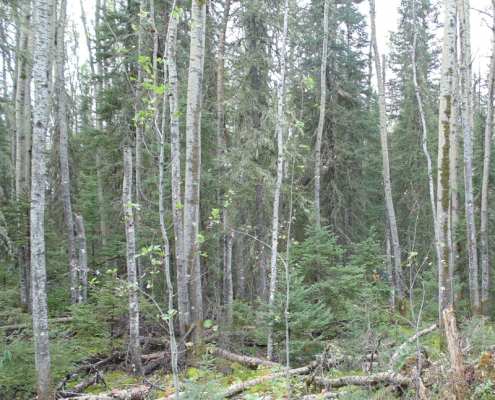A Consultant’s Reflections
As a forest land reclamation consultant, I seek a variety of ways to grow my value as a legitimate problem solver in the remediation of environmental issues in the Boreal Forest. One way I do that is to seek opportunities to confirm my knowledge and challenge my biases. Often, I peer over the fence into other resource management disciplines, to have a look at what they’re doing and see if there might be some ideas to be gleaned. This past June and early July I did just that when I decided to revisit the Canadian forestry sector, once my home for employment, to see how it [and I] changed since 2003. I stepped back almost 30 years, to my formative days of work in the Boreal Forest, to take on the short-term role as a field worker. And it turned out to be a golden opportunity, providing me with a chance to revisit project assignments through the eyes of a boots-on-the-ground worker.
The job of a forest land labourer is not an easy one because of the many responsibilities associated with the role. For example, field workers are tasked with adherence to legal and corporate standards, expected to make and take responsibility for field decisions, compelled to find and field mark features that require protection, and relied upon to supply recommendations around attributes that should be removed from the project scope. This job is not for the faint of heart, as shown in their physical stamina, persistence, and critical thinking skills. The forest worker is expected to complete assignments in a safe, correct, and cost-effective manner while dealing with adverse weather, rugged terrain, poor access, dangerous wildlife, and incessant flies. They are a dedicated group of people.

While fulfilling the forestry labourer role I had an opportunity to reflect upon how my leadership within Reclaimit projects both removes and creates performance affecting obstacles. And I came up with three items for continuous improvement in my leadership role. First, it takes more time to complete tasks when the commitment to regulatory and customer standards of performance are taken seriously. On one hand, these requirements are in place to prevent an incident, like an accident or negative environmental impact, but on the other hand, they can be considered obstacles to greater productivity because they are time-consuming and reduce production. Human nature is to take the easy route, the path of least resistance. So, upon reflection, the opportunity for me is to work harder when setting up a project to ensure that selected performance measures are truly needed and that they are properly accounted for in the design.
Second, work in the forest is tough. There is no way around it and good physical stamina is essential. Therefore, it is critically important to ensure the workers receive tools that work, plans can be efficiently executed, and there is reliable access to adequate nutrition, hydration, and rest.
And third, it is incumbent upon me as a designer of projects to ensure that the goals remain realistic. Forgetting, disregarding, or overlooking this will set the fieldworker up for failure because they will be unable to deliver a final product that is incident and accident-free, the quality will not be met, or the cost will be neither dependable nor sustainable.
So, the work was good, and I will be back. More themes remain for me to revisit, and many more new ideas await my discovery as I explore the exciting world of Reclaimit’s forest remediation and reclamation services, and travel across the provinces of Canada and around the world in project-related adventures. Have a question about my blog articles, reclamation services, or have a forestry-related question? Click here to drop me an email!
Did you like this article? You may also like Saturday Science – A lad and his sticks




